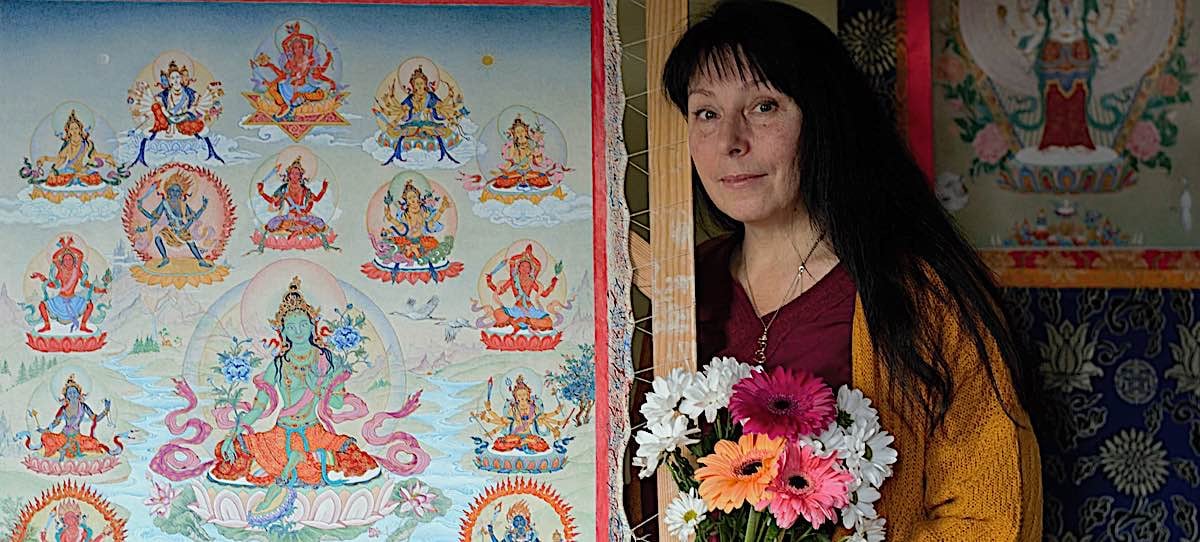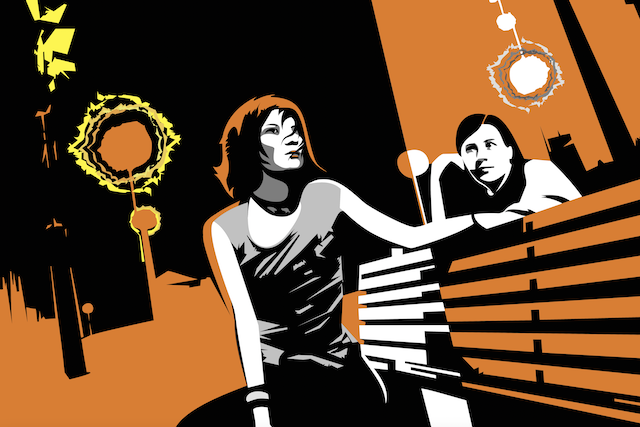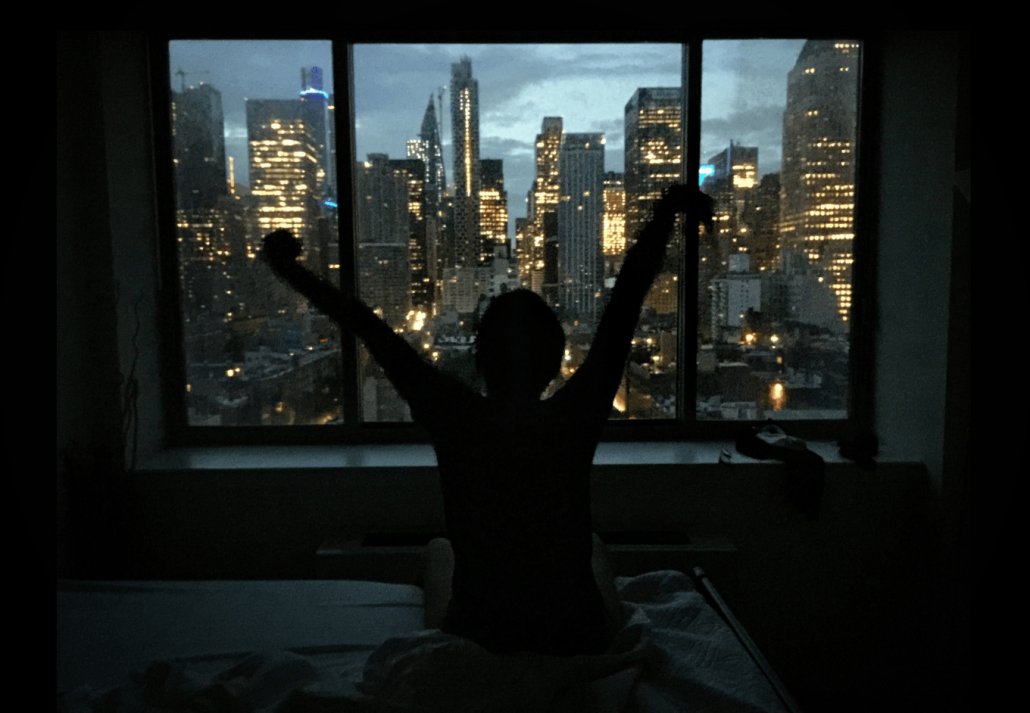Finding Freedom: The Death Row Journey of Jarvis Jay Masters
Susan Moon on the spiritual journey of Jarvis Jay Masters, a Buddhist practitioner on death row in San Quentin prison. The post Finding Freedom: The Death Row Journey of Jarvis Jay Masters appeared first on Lions Roar.

Susan Moon on the spiritual journey of Jarvis Jay Masters, a Buddhist practitioner on death row at San Quentin Prison. First published in Lion’s Roar magazine 2007. Read our 2010 review of Jarvis Jay Master’s book, That Bird Has My Wings.

San Quentin Prison. Photo by Telmo.
Jarvis Masters lives on a prime piece of real estate beside San Francisco Bay, in pricey Marin County, California. But he can’t see the stunning view of the city or the waves lapping at the shore because the window of his San Quentin cell faces the other way, into the prison yard. Jarvis is now forty-five, and San Quentin has been his home since he was nineteen.
I have been corresponding with Jarvis for many years and visiting him for about five. When I drive across the Richmond Bridge to talk to Jarvis about his life as a Buddhist prisoner and his writing, I see his home ahead of me, lit by the early morning sun, floating in the bay like a fairy-tale palace with a golden, crenellated tower. But when I get to the visitors’ parking lot, the magical turret is unmistakably a gun tower.
Jarvis entered prison with a seven-year sentence for armed robbery. He has long since served out his sentence for crimes he did commit, but he is still in prison, on death row, for a crime that many believe he did not commit. During his life in prison, he has become a Buddhist, studying first with the Tibetan master Chagdud Tulku and then with Pema Chödrön. His well-received first book, Finding Freedom: Writings from Death Row, appeared in 1997. He is finishing his second now, tentatively titled That Bird Has Wings: The Autobiography of an Innocent Man.
I have to go through many barriers to get to Jarvis. First, I wait outside the gatehouse for a guard to buzz me in. Inside, my papers and pockets are checked, and the officer on duty looks me up on the computer to make sure I have a proper appointment. I pass through a metal detector and my wrist is stamped. Inside the fence, I walk up the hill to the prison itself, stopping halfway to take off my shoes again and go through a second metal detector. A fresh breeze comes across the water, and I see the view of the spires of San Francisco that Jarvis never sees. When I reach the prison wall, I wait beside a grated door called the sally port, until the guard inside notices me and opens the door electronically, which lets me into a little vestibule. I push my ID through a slot at the bottom of the window and tell the guard I have an appointment to visit Jarvis Masters. He opens the interior door into the visiting area.
At first this whole process was frightening. Now I pretend to myself that I’ve gotten used to it, though it’s not something you can ever really get used to.
It’s like a mythical journey to see some wise teacher who waits at the inner core of a maze. But this teacher wears prison blues.
I go down the hall in the non-contact visiting section, looking into each window as I walk by, until I see Jarvis, at last, sitting in a cell on the other side of the bulletproof glass. He smiles and we pick up the phones on either side of the window to talk. The barriers drop away.
It’s like a mythical journey to see some wise teacher who waits at the inner core of a maze. But this teacher wears prison blues and sweat pours down his face in his hot cell. He mops his forehead with a handkerchief.
We talk about his life in prison. He tells me about ice. “When I fell on the exercise yard and twisted my wrist,” he says, “they brought me ice. At first I was angry. No X-ray? No Ace bandage? They just gave me ice and took me back to my cell. I hadn’t seen ice for years and years. I took a cube from the plastic bag and for some reason, I touched it to my forehead. Then to one side and to the other side of my face. I rubbed it around my eyes, really slow, and cold, trying to remember ice. What was it? This feeling? My hand touched the ice to the skin of my arm, all on its own. I lost my memory—no ice, nothing. That was a trip!”
Jarvis was born in 1962, in Long Beach, California, one of seven children. Jarvis’s mother and stepfather were heroin addicts, and from the very beginning of his life, he experienced violence, instability, and neglect. When he was five, he and his siblings were taken away from their mother, separated from each other, and sent to foster homes.
Jarvis stayed in a loving home with an elderly couple for several years, but by the time he was nine his foster parents had become too old to take care of him. After that, Jarvis was sent to—and often ran away from—a series of foster homes, group homes, and locked facilities for dependent children. He stayed with an aunt for a while in a public housing project, but he got into trouble there. From the age of twelve on, he was in and out of institutions. As an angry young man of seventeen, he was released from the California Youth Authority and went on a crime spree, holding up stores and restaurants until he was captured and sent to San Quentin. He never shot anyone, but he did threaten his victims with a gun.
When Jarvis arrived at San Quentin in 1981, he did what many young men do on entering prison. Looking for a sense of belonging and protection, he became involved with a prison gang. In 1985, Sergeant Hal Burchfield was murdered by members of the gang. A prisoner reached through the bars of his cell on the second tier and stabbed Sergeant Burchfield with a spear made from a piece of a bed frame and rolled-up paper. At the time, Jarvis was locked in his cell on the fourth tier.
Although many inmates were suspected of conspiring to murder Sergeant Burchfield, only three were tried, Jarvis among them. One was accused of being the “spear man,” another—an older man—of ordering the killing, and Jarvis of sharpening the metal that was allegedly passed along and later used to make the spear. After a long trial, all three were convicted. The main evidence against Jarvis was the testimony of other prisoners, some of whom were suspected of being rewarded by the prosecutor’s office for testifying, and most of whom have since recanted. The other two defendants were sentenced to life without parole. Jarvis, partly because of his violent background, was sentenced to death. His appeals are now pending before the California Supreme Court, which in February of this year gave a favorable response to Jarvis’s habeas corpus petition, requiring the Attorney General to show cause why Jarvis should not receive a new trial.
It was in the course of preparations for his death penalty trial in 1990 that Jarvis was introduced to Buddhist vows by Chagdud Tulku Rinpoche. Chagdud Tulku came down from Oregon to the prison to conduct an empowerment ceremony and continued to visit Jarvis regularly until his death. Jarvis’s root teacher will always be Chagdud Tulku, who died in 2002, but he is now a student of Pema Chödrön, whom he calls his “dharma mom.” Practice has been central to his being able to survive prison. “I’m in trouble!” he says. “I practice because I’m in trouble, and practice is a must for me to be a self-disciplined person. I already know what happens when I don’t practice—it ain’t too cool.”
It’s challenging to meditate in prison, but it’s also the perfect place.
Jarvis tells me that prison has its pros and cons as an environment for Buddhist practice. “It’s challenging to meditate in prison,” he says, “but it’s also the perfect place. People think they have to get a nice new cushion to be able to meditate. I would be that way, too, if I had the choice. But I’m fortunate not to have a new cushion. I feel the hard floor. This is where life is. Not knowing what’s going to happen tomorrow has its way of making time more precious. When you’ve been sentenced to death, you know you don’t have much time. You’re forced to look at what is, right now. What can you do now to be of benefit to others? To do it without a reason, that’s the hard part.”
Jarvis tries to keep it simple when talking to fellow prisoners and the guards about his Buddhist practice. One day a guard kept staring at Jarvis while he was meditating, so he told him in a joking voice, “Get off my front lawn. You’re trespassing.”
Then the guard asked him, “What are you doing?”
“I’m trying to get out of here,” Jarvis replied. Since the guard was more than likely looking forward to the end of the shift, this was an answer he could easily relate to, and he moved on.
When I ask him whether fellow prisoners give him a hard time for being a Buddhist, he says, “I try to keep it light. If other prisoners see me meditating and they ask what I’m doing, I say, ‘Trying to stay sane. You think I’m going to let you drive me crazy? What do you do?’”
One time when I was first meditating, it came to me: I can’t climb the walls, but I can make them disappear.
While he finds it possible to make light of his situation and converse easily with others, the intensity of his environment and the pain there are never far from his sight. “I’ve seen too many people go crazy in here,” he says. “I figure you’ve got three choices. You’re either going to go crazy, or kill yourself—just go dead inside, in your soul if not your body—or find something to sustain you in a spiritual realm. You’ve got to have a way to take care of yourself when things go wrong, when you don’t get any mail or visits, or you start messing with your own head, worrying about why they didn’t come to get you for the shower at the regular time.
“How do you get out of prison in prison? That’s the question I’ve been asking myself. We’re always looking at a wall here. One time when I was first meditating, it came to me: I can’t climb the walls, but I can make them disappear. I told this to Rinpoche when he visited me, and he smiled and just snapped his fingers in the air. He had tears in his eyes.”
Until recently, Jarvis was housed in the Adjustment Center, the maximum security unit of the prison, otherwise known as “the hole.” Prisoners there are allowed to leave the solitary confinement of their cells only three times a week for exercise, and for “non-contact” visits. (Some prisoners rarely or never have visitors, but as a result of the associations he has made through Buddhism and his writing, Jarvis has many friends who come to see him, once they have been through a detailed approval process.) A few months ago, after twenty-two years in the Adjustment Center, Jarvis was finally moved to East Block, the regular death row (how “regular” can death row be?) in a lower security section of the prison.
During twenty-six long, hard years in the penitentiary, almost all of them in the Adjustment Center, Jarvis has changed radically. A big part of that change has been Buddhism, but his writing has also been extremely important, as an outlet for him, as a way to communicate with the world outside, and as an inspiration to others—prisoners and non-prisoners alike. Jarvis had very little schooling, and his writing voice is self-taught. His first piece to be published, “Scars,” appeared in Wingspan in 1991 and has been anthologized many times since. He has written frequently for Turning Wheel: The Journal of the Buddhist Peace Fellowship and for other publications. His first book, Finding Freedom, was published by Padma Publishing, the publishing branch of Chagdud Tulku’s community in Oregon. It’s now in its third printing.
I can leave San Quentin by being a writer.
Jarvis feels that writing may have rescued him from the deep isolation and dearth of meaningful interaction within the prison walls. “Writing extends me outward. I have to do it,” he says. “I can leave San Quentin by being a writer. I also have the opportunity to break through the stereotypes people have about prisoners. Another good thing I’ve experienced through writing is that everyone has a tragic and beautiful story, and I’m just like everyone else. That’s the biggest surprise. I have the same human feelings. But without writing, I wouldn’t see that.”
It is remarkable how, in the extreme confinement of the Adjustment Center, Jarvis, with the help of Chagdud Tulku and his other dharma supporters, has trained himself to be nonviolent and to make a contribution to the world around him, inside prison and beyond, through his friendships and his writing.
“Writing takes you deeper into yourself,” he says. “You meet a whole new person when you start writing about yourself. You see what’s relevant about the past. I see how messed up I was, believe me. Some of my past experiences were like a horror movie. My next book describes it. You don’t ever want to get trapped in the experience you’re remembering. You try to forgive—others and yourself. You’re a part of this one giant experience.”
His second book, That Bird has My Wings: Autobiography of an Innocent Man, is nearing completion. I’m one of the people who has helped him with the editing, and I’m always moved by his ability to unfold his life before us with his writing. He gives me pages in his extraordinary handwriting: tiny, elegant, fluent, with high, curved risers. From a distance it might not appear to be English—maybe Arabic, or Georgian. In the Adjustment Center, the only writing implement Jarvis was allowed was the insert of a ballpoint pen. One day he shook the flimsy plastic tube at me from the other side of the window and said, “My whole life flows out through this damn sorry little thing!”
When I write, I see that this is what Buddhist practice is—being there in the moment, being right there with others.
Meditation and writing might be ways for a prisoner to retreat farther inward, but for Jarvis it appears to be completely the opposite. “I can relate to other people, especially kids, thanks to writing,” he says. “Buddhism helps me, too, because it doesn’t play the blame game. Buddhist practice helps me write because it helps me identify with other people. When I write, I see that this is what Buddhist practice is—being there in the moment, being right there with others.
“My friends in prison want to be a part of my writing. They tell me stories. When something bad happens, or when something good happens, they ask me to write about it. They want that because it humanizes them. You don’t get on death row for nothing. But you’re still human. I’m into humanizing people. That’s where I’m at.”
Jarvis is not a big proselytizer. “I try not to use the word Buddhism, not to call myself a Buddhist,” he says. “I want my practice to be my natural way of being. I want to act out of my heart, out of the best parts of myself.” Nonetheless, that way of being is rubbing off on others.
“A lot of people in here are coming around,” he tells me. “They don’t see Buddhism as a religion; they see it as a kind of meditation, or relaxation. A lot of prisoners have been on death row for a long time now. There’s a restlessness. They want to learn patience. They want to learn to sit with their thoughts, or better yet, without them. There’s an absolute need for some kind of spiritual life. You come to this realization at some point—there’s no other way to stay sane. Even the act of pretending to meditate, of just sitting on the floor in the middle of your cell with a Snickers bar, for example, provides some anchor for your sanity.”
Before I leave, we talk about his future. “I want to write about things outside this prison,” he says. “I want to write about nature. I want to see a squirrel and then describe it. I want to write to the sound of water, and describe that, too. I want to learn to listen to another kind of story in the future, and tell that story in ways I do not, for now—just for now—exactly know. I don’t know the writing I will do on the day of my physical freedom.”
Jarvis reaches out to the world with his words, with his longing for connection. Our visits are still “non-contact” visits, but Jarvis refuses that definition. Bulletproof glass doesn’t stop him from making contact again and again.
A guard comes to get Jarvis when our visiting time is over. He has to crouch down awkwardly to reach his hands through the porthole behind him, and the guard cuffs him. I think we are both startled and somehow embarrassed on the guard’s behalf that he has the job of turning Jarvis back into a prisoner.

 JaneWalter
JaneWalter 































